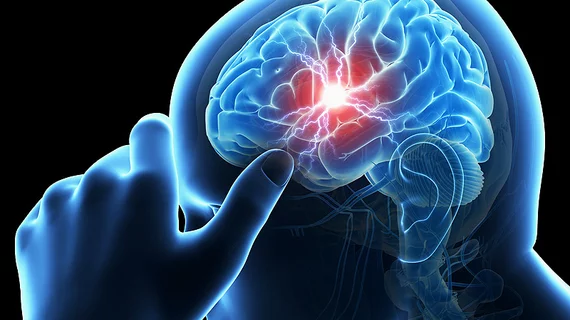MRI technique helps establish new biomarker for minor stroke
Using dynamic contrast-enhanced MRI, researchers found quantitatively mapping a patient’s blood-brain barrier dysfunction (BBBD) may be valuable for risk stratification and stroke prevention after a transient ischemic attack (TIA).
Currently, diffusion-weighted MRI (DWI) is used to identify acute brain infarctions, which are associated with near-term and potentially deadly stroke, wrote Yonatan Serlin, MD, with McGill University in Montreal, and colleagues, in the May edition of Stroke.
“The diagnosis of TIA remains challenging and TIA mimics comprise nearly 60% of clinic referrals,” the authors wrote. “The unmet need for a reliable diagnostic biomarker of microvascular brain disease is affirmed by TIA cohort studies displaying high variance of 9% to 67% in the frequency of DWI positivity.”
The researchers turned to dynamic contrast enhanced-MRI to measure a patient’s BBBD and prospectively conducted the test in 57 adults at a center In Israel who were diagnosed with TIA or minor stroke. Fifty healthy controls were used to determine the normal blood-brain permeability. Patients were designated with BBBD when both blood-brain and microvascular permeability surpassed the 95th percentile in healthy participants.
Serlin and colleagues found patients with extensive BBBD were 5.35 times more likely to develop a new stroke during follow-up at 1.7 years, compared to a 0.89 risk ratio for those with positive DWI.
Additionally, BBBD localization corresponded to clinical presentation in 72% of patients; and 20 of 31 participants with negative DWI findings also had BBBD.
“Observing BBBD during acute or subacute phases as well as after symptom resolution, highlights the role of dynamic contrast-enhanced -MRI in the diagnosis of cerebrovascular disease,” Serlin et al. wrote.
Overall, the team noted their study is the first of its kind and affirmed more will be needed to properly implement MRI-based BBBD mapping.
“We propose a clinically-applicable quantitative approach for the diagnosis of microvascular pathology and subtle brain ischemia,” the authors added. “Large-scale studies are required to confirm the diagnostic, prognostic, and predictive value of quantitative BBB mapping.”

